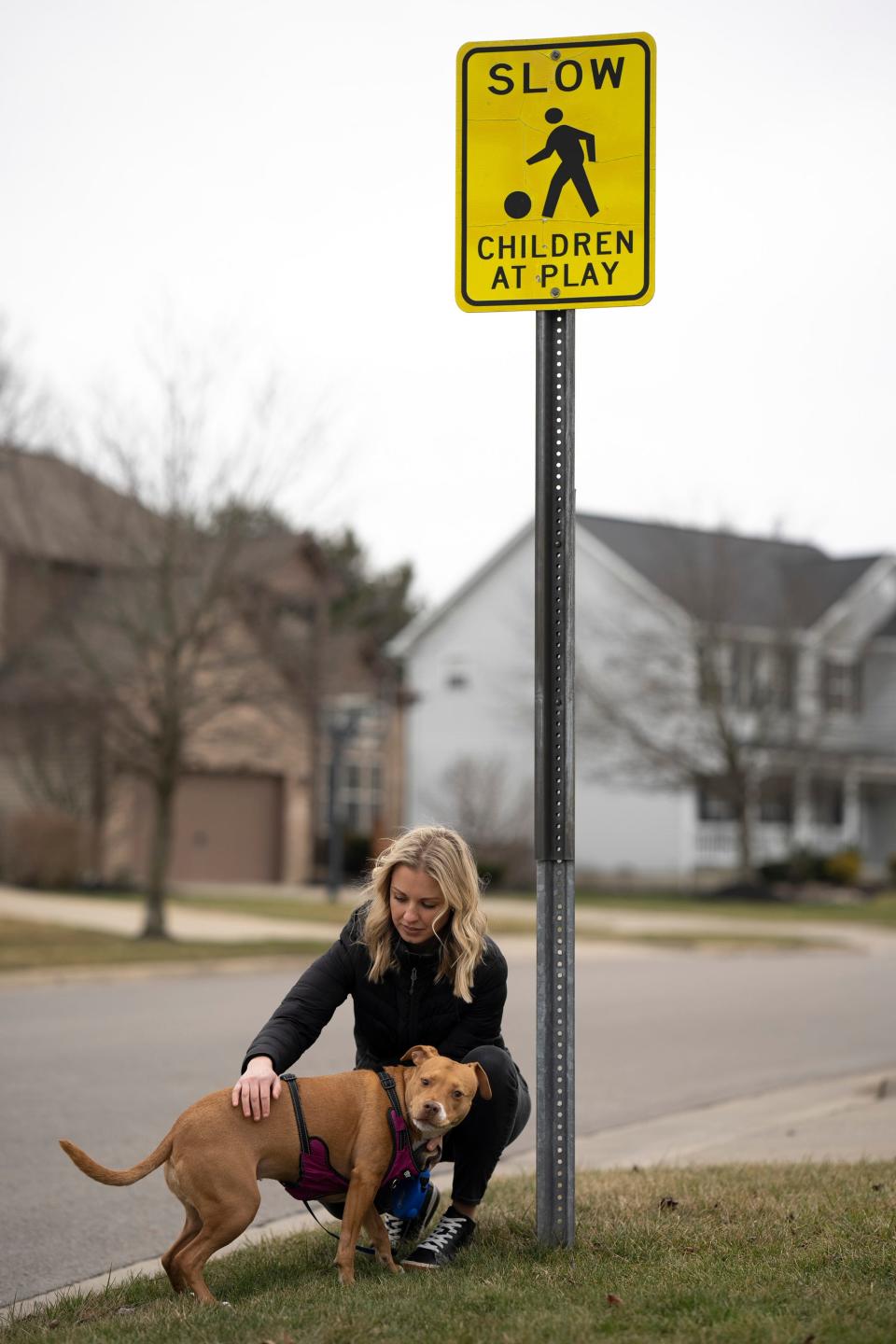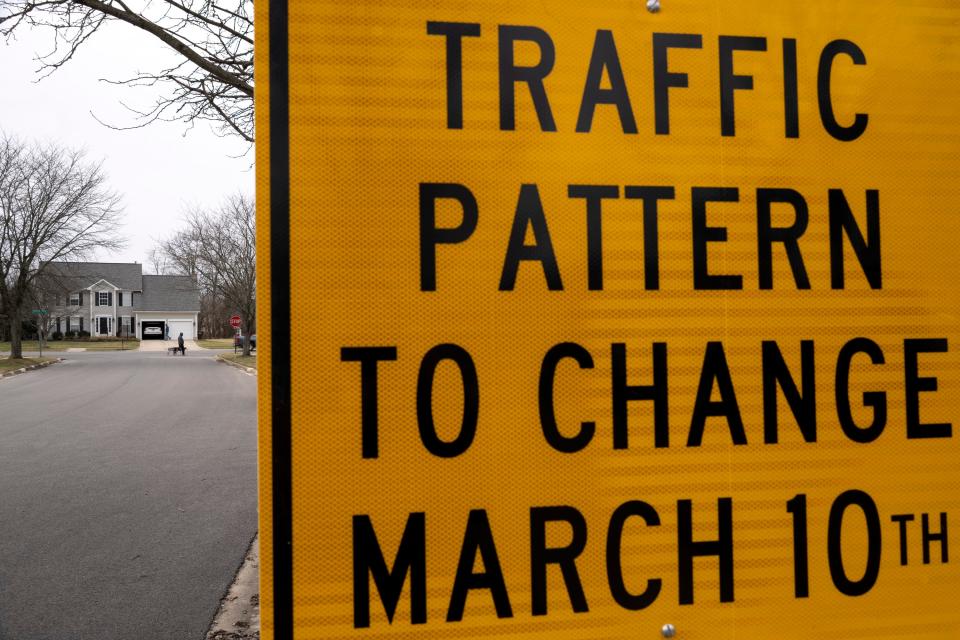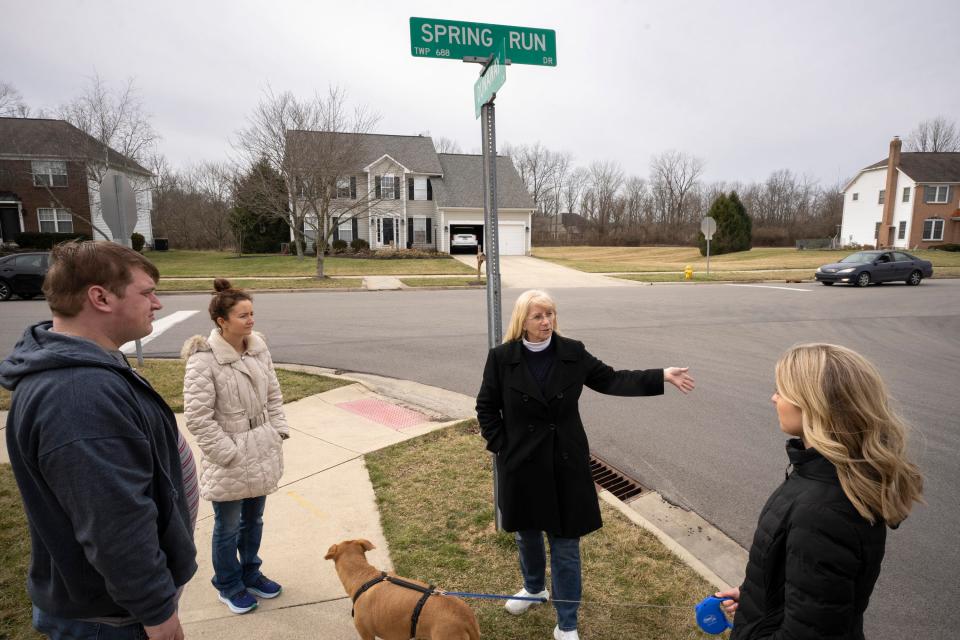Genoa Township stop signs ruled illegal, to be removed

Lindsay Guard is concerned about the steady roll of cars, trucks, bikes and kids along Spring Run Drive, a popular north-south alternate to Sunbury Road in Genoa Township where three-way stop signs help to slow traffic.
Others living in this and other nearby middle-class neighborhoods — some for decades — also have been concerned enough about speeders to ask township officials to enforce the signs.
Their efforts have caused countless cars to heed the ubiquitous red octagonal "stop" command, here and at four other sets of signs in the township.
But after some questioned the legality of the signs, they now will be removed, prompting confusion and dismay among many residents and some officials.
"Speeding in neighborhoods is the number one complaint we get. We have over a dozen hot spots where we are running radar," said Steve Gammill, Genoa Township police chief, who quickly noted, "We have to follow the law in doing so."

State law permits cities and villages of more than 5,000 residents to install stop signs and enforce violations. But Ohio's 1,308 townships cannot, unless they meet engineering and safety requirements overseen by the counties in which they reside.
When these signs were installed, township officials apparently did not get authorization from the Delaware County Engineer, which would have justified their use based on traffic counts and safety issues. So earlier this year, the township requested a retroactive opinion on the signs, which the county deemed "unwarranted."
All five sets of stop signs in the neighborhoods not far from Westerville will be removed by March.
Guard, who has three kids — 7,10 and 12 — said that once the signs in her Barrington Estates neighborhood are gone, "It's going to be a drag strip."
In place of stop signs, the township plans to install crosswalks with flashing lights or speed-monitoring stations, Trustee Renee Vaughan said.

But Guard and others said the flashing crosswalks are only activated by pressing a button, not something that distracted or impatient kids on bikes or skateboards may always do.
Gammill has said that if the signs remain and are unenforceable that accidents at the intersections could then expose the township to lawsuits.
"We're in a pickle," Vaughan said. "We're at the mercy of the engineer and the prosecutor's office."
Paul Wise, township administrator, said previous trustees who approved the signs had "good intentions" and were responsive to community concerns.
Guard said officials must have had records for the signs, and she wants to know how long the township knew that the signs were illegal.
"If they knew we were open to liability for years, why now?"
Part of the answer may be found in an Ohio Attorney General's opinion from November 2021.
Responding to questions from the Summit County Prosecutor, Attorney General Dave Yost ruled, in part, that township trustees are "not required to obtain an engineering study before making an intersection of township roads a multi-way stop."
But, Yost added, "I caution, however, that the manual (Ohio Manual of Uniform Traffic Control Devices) recommends an engineering study for good reason — engineers have a better understanding of traffic flow and safety than do township trustees."
In that case, a Summit County township installed a new stop sign, based on Yost's opinion. That sign apparently is still in place, said John Galonski, Summit County assistant prosecutor, noting that circumstances may have differed from those in Delaware County.
Rob Riley, deputy Delaware County engineer, who lives in one of the local neighborhoods, said, "I have kids, too, and they walk on some of these streets. We have every reason to want the streets to be safe."
As a parent, motorist and engineer, he understands the dilemma.
"The reality is that stop signs, like any other traffic sign such as speed limits or any other law, need to be reasonable and justified and must have voluntary compliance by most drivers – otherwise they aren’t effective," he said.
Officials say it is likely that other signs in other townships across the state also are illegal.
"I think it's a fair statement to say. The probability is that there are similar issues elsewhere," said Dean Ringle, former Franklin County Engineer and current executive director of the County Engineers Association of Ohio.
Robert Matis, a 30-year resident in the area, said that motorists routinely travel 45 mph in the 25 mph zone.
Even though his three children are adults, he was motivated on Christmas Eve to gather 95 signatures for a petition to preserve the signs. He also thinks laws regulating signs should be similar among cities, townships and villages, some of which have just a few hundred residents.
"Laws can be created. Laws can be changed," Matis said.
As for Guard and her neighbors, she said, "If there really is nothing we can do, then we hope for the best."
"These little things are definitely going to affect the daily lives of those of us who live here," she said.
dnarciso@dispatch.com
@DeanNarciso
This article originally appeared on The Columbus Dispatch: Genoa Township stop signs ruled illegal, to be removed
